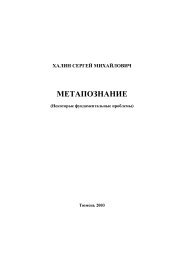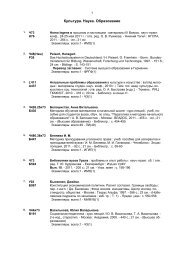The Economic History of Byzantium - Dumbarton Oaks
The Economic History of Byzantium - Dumbarton Oaks
The Economic History of Byzantium - Dumbarton Oaks
Create successful ePaper yourself
Turn your PDF publications into a flip-book with our unique Google optimized e-Paper software.
<strong>The</strong> Role <strong>of</strong> the Byzantine State in the Economy<br />
Nicolas Oikonomides<br />
<strong>The</strong> adherence <strong>of</strong> <strong>Byzantium</strong> to tradition was a feature <strong>of</strong> every aspect <strong>of</strong> state life,<br />
pr<strong>of</strong>oundly affecting relations between the state and the economy and determining<br />
the extent to which the former intervened in the latter. However, although the state’s<br />
theoretical principles were, <strong>of</strong> course, founded on tradition, when the time came to<br />
put them into practice a realistic approach prevailed: theory survived and continued<br />
to have its effect, though without substantially altering the true situation. Those in<br />
power intervened frequently in economic life and at many points <strong>of</strong> it, working on the<br />
basis <strong>of</strong> the old theory that the purpose <strong>of</strong> action <strong>of</strong> any kind was to foster the smooth<br />
operation <strong>of</strong> the state machine, <strong>of</strong> the empire “by the grace <strong>of</strong> God.” Inreality, however,<br />
the changes that came about were pr<strong>of</strong>ound, and they came about without disturbing<br />
the theoretical surface <strong>of</strong>the omnipotence <strong>of</strong> the state, and <strong>of</strong> the emperor in particular.<br />
It has been said that <strong>Byzantium</strong> had a “directed” economy, since the intervention <strong>of</strong><br />
the state was manifest even inrelation to activities, such as trade, that would normally<br />
be beyond such controls. This description has now been abandoned, and the economy<br />
<strong>of</strong> <strong>Byzantium</strong> is now seen as “restrained” by the state; in other words, it was an economy<br />
that functioned on the basis <strong>of</strong> the freedom <strong>of</strong> transactions but in which the state<br />
intervened to prevent the excessive accumulation <strong>of</strong> wealth, the suppression <strong>of</strong> the<br />
weakest, and the exploitation <strong>of</strong> the citizens/consumers. Where this intervention is concerned,<br />
the Byzantine state was substantively different from the medieval states <strong>of</strong> western<br />
Europe, which functioned under a system <strong>of</strong> effective decentralization.<br />
One <strong>of</strong> the unchanging characteristics <strong>of</strong> the Byzantine administration was its centralization:<br />
everything passed through the center, everything was controlled from the<br />
center. Here there was a fundamental contradiction between theory and reality, since<br />
in actuality phenomena <strong>of</strong> decentralization are <strong>of</strong>ten to be observed. However, the<br />
contradiction was blunted by the adaptability <strong>of</strong> the Byzantine state, which was able,<br />
when necessary, to confine its control to the bare essentials. In the last centuries <strong>of</strong><br />
<strong>Byzantium</strong>, a degree <strong>of</strong> decentralization is evident, but even then the state kept control<br />
This chapter was translated by John Solman.








